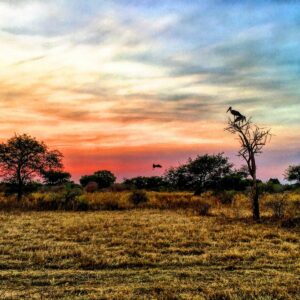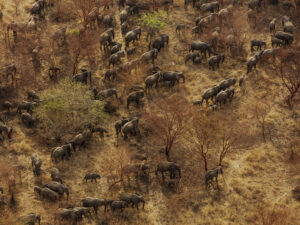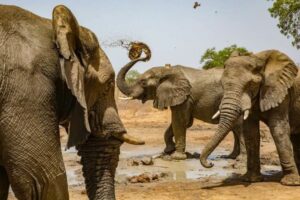-
Contact emailzakoumainfo@african-parks.org
- Bookmark
- Claim National Park

- Profile
- Tour Operators
- Accommodation
- prev
- next
Overview
Zakouma National Park in Chad is one of Africa’s most remarkable stories of transformation. Between 2002 to 2010, 95% of the parks’ elephants were poached – almost 4,000 were slaughtered for their ivory, and poachers would often take out multiple family units at the same time. Not only were they destroying the parks wildlife, they were wreaking havoc on local people too. In 2010, African Parks, on invitation by the Chadian Government, signed a long-term agreement to manage Zakouma and stop the bloodshed. Our first step was to overhaul law enforcement, but it wasn’t for the faint of heart.
In 2012, six of our rangers were gunned down execution-style during their morning prayers. But our rangers, with their indomitable spirits, didn’t give up. Because of their efforts and effective community work, only 24 known elephants have been lost to poaching since 2010. Along with providing law enforcement, we built ‘Elephant Schools’ for local communities, providing desks, blackboards and teachers’ salaries, helping more than 1,500 children get an education. We built airstrips, and VHF radios were installed so community members could contact our control room with information about any illegal activity. People were employed to help manage the park, making Zakouma one of the largest employers in the region. With law enforced and security reclaimed, tourists began to visit, delivering needed revenue back to the park and local communities.
With peace restored to the region, something miraculous happened. Elephants were able to be elephants once again, and for the first time in years, they began to breed and raise their young. In early 2018, we counted 103 calves under the age of three. In 2011, we counted one. The elephant population has now surpassed 559 individuals and are on the rise for the first time in a decade. In October 2017, we doubled our footprint around Zakouma by signing an MoU with the Government to manage the Greater Zakouma Ecosystem, which includes Siniaka Minia Faunal Reserve and other critical wildlife corridors.We’ve come a long way since 2010. The story of Zakouma is of a park rising from the ashes and becoming an unlikely tale of redemption, for people and animals alike.
Greater Zakouma Ecosystem covers an expansive 30,693 km2, of which 7,692 km2 includes Zakouma National Park (3,049 km2) and Siniaka Mania Faunal Reserve (4,643 km2). Both of these protected areas fall under the direct management of African Parks. This ecosystem, which is situated just south of the Sahara Desert and above the fertile rainforest regions, comprises of critical conservation areas for key species in Central Africa. The total area impacted by the expanded management agreement also includes Bahr-Salamat (13,000 km2) and adjoining wildlife corridors (10,000 km2).
Location
-
Salamat, Chad
Vital Park Information
Chad
3 000 km²
Chad has one of the lowest rates of access to safe drinking water and sanitation services in the world. While access to safe water and sanitation is improving in urban areas, children in rural areas are almost always at risk from these water and sanitation-related diseases.
CFA franc, Central African CFA franc
April, December
Best Time to Visit Chad. The ideal window in which to visit Chad falls between December and April. By this time, the rainy season in the country's southern and central regions comes to an end, and Zakouma National Park reopens its luxury Tinga and Salamat camps.





